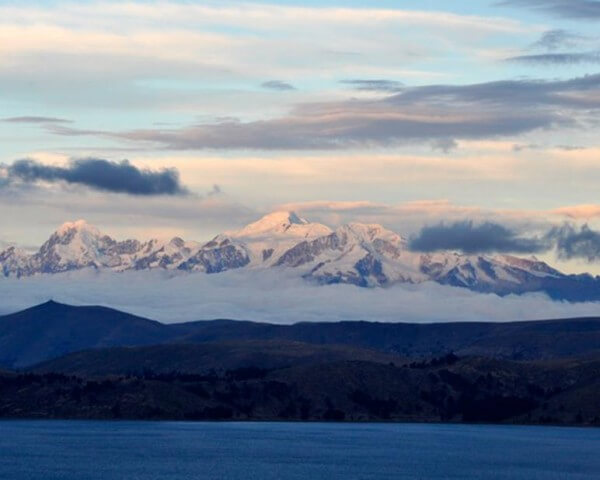Companies worldwide are staking out policies for sustainable development and corporate social responsibility. Watchmaking is no exception; the industry is adding its brick to the wall even if the building plans may seem chaotic at times. But at least the industry is prepared to commit. For a company to create shareholder value, it must also create shared value for the wider community, emphasises Peter Brabeck-Letmathe, Chairman of the Board of Nestlé SA.
While there is no single definition of corporate social responsibility, experts agree that it is practiced on what is, essentially, a voluntary basis. Companies engage in activities that benefit society and the environment even though their main objective is to improve the bottom line. According to Josh Makower, a professor at Stanford University, social responsibility corresponds to certain business leaders’ belief that they can and must play a role beyond just maximising profit. In other words, a company is no longer answerable to its sole shareholders, but also to its employees, customers, suppliers and contractors. To the community in the widest sense that enables it to exist.
Omega goes into Orbis
Watch companies play their role to the full, and more than proportionately if the example of Rolex, a pioneer in this domain, is anything to go by. The more petty-minded will point out that the sector’s margins are sufficient for it to make this kind of investment, which is something of a dead-end debate. We have rarely, if ever, seen a hedge fund hand over a cheque with several zeros to an NGO, campaign against greenhouse gases, or finance a school in the Colombian Andes. A far more constructive approach is to examine some actual cases, in the watch sector of course, chosen randomly, and somewhat arbitrarily, among the countless examples.
First Omega. Swatch Group’s flagship brand supports Orbis which, contrary to its name, has nothing to do with space missions. Orbis is a nonprofit organisation working to prevent and treat blindness and provide ophthalmic care. It operates a DC-10 aircraft which has been converted into a flying eye hospital so that Orbis can provide eye care in the world’s most remote and inaccessible regions. In the classroom at the front of the plane, local eye healthcare professionals gather for lectures, discussions and live broadcasts of surgical procedures being performed in the next-door operating room. If needed, surgeries can also be broadcast outside the aircraft, such as at a nearby hospital. This allows large numbers of trainees to observe the surgeries and ask questions to the operating surgeons via a two-way audio-visual system. Since it started in 1982; Orbis has taken programmes to almost 90 countries. Over 12 million people have been given sight-saving care and a quarter of a million professionals trained in ophthalmic techniques with the ultimate goal of enabling partner hospitals to themselves provide long-term, affordable, accessible and quality care.
Piaget travels to the Altiplano
Piaget, meanwhile, is taking action in Bolivia, in the Altiplano region, a name which flies the brand’s colours, being that of one of its iconic collections. “This philanthropic and humanitarian activity is intended to give back to the Altiplano, a remote and exposed region, something of what it has given Piaget,” explains Philippe Léopold-Metzger, Chief Executive of the Geneva firm. Down on the ground, Piaget’s project is to equip five health centres with ultrasound and to link them by internet, giving local populations easier access to medical expertise and training health personnel in telemedicine. The project connects professionals at three isolated healthcare centres in the region to hospitals in La Paz and Copacabana.

Piloted by Prof. Antoine Geissbuhler, Director of the eHealth and Telemedicine Department at Geneva University Hospitals, the project was put in place between June and December 2011. Satellite connexions are up and running, equipment has been installed, and the centres are operational. Says Prof. Geissbuhler, “These telemedicine tools improve the care of patients and facilitate the transfer of information and expertise, while avoiding the need to transport either the patient or the specialist concerned.” The ultimate objective is to lay the foundations for a nationwide telemedicine strategy in Bolivia, one of the poorest countries in the world despite being resource-rich. “The aim is to bring certain centres, which are on the verge of becoming medical deserts, out of their isolation,” Prof. Geissbuhler adds.
Jaeger-LeCoultre goes deep
Sustainable development immediately triggers images of our threatened oceans, a cause that is dear to Jaeger-LeCoultre. The company is a partner to the Tides of Time world heritage marine programme, alongside the International Herald Tribune and UNESCO. The story began in 2007 with the launch of the Master Compressor Diving. The fragility of these ecosystems and the urgent need to preserve this biodiversity was evident, and so Jaeger-LeCoultre decided to lend its support to the protection and conservation of marine sites. This is a long-term commitment from a watchmaker which has consistently promoted harmonious growth with the smallest possible environmental footprint.
Numerous sites have already benefited from Tides of Time, including the Galápagos Islands (Ecuador), the Belize Barrier Reef, Tubbataha Reef Marine Park (Philippines), the Whale Sanctuary of El Vizcaíno (Mexico), and the Great Barrier Reef (Australia). To give just one example of the threats facing these sites, over the past 27 years the Great Barrier Reef has lost more than half its coral cover as a result of storms, predatory starfish colonies and climate change. If nothing is done, warns the Australian Institute of Marine Science, coral cover could halve again by 2022. The time to act is now.













